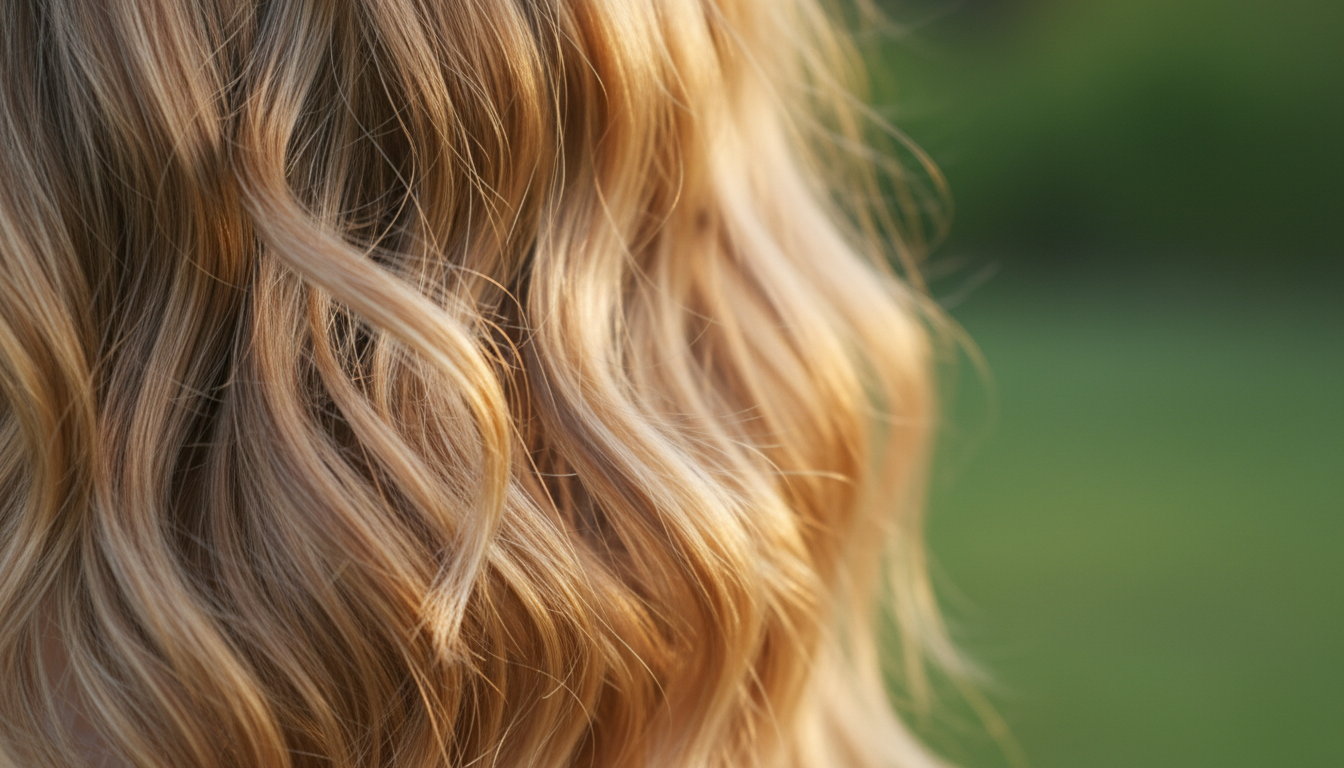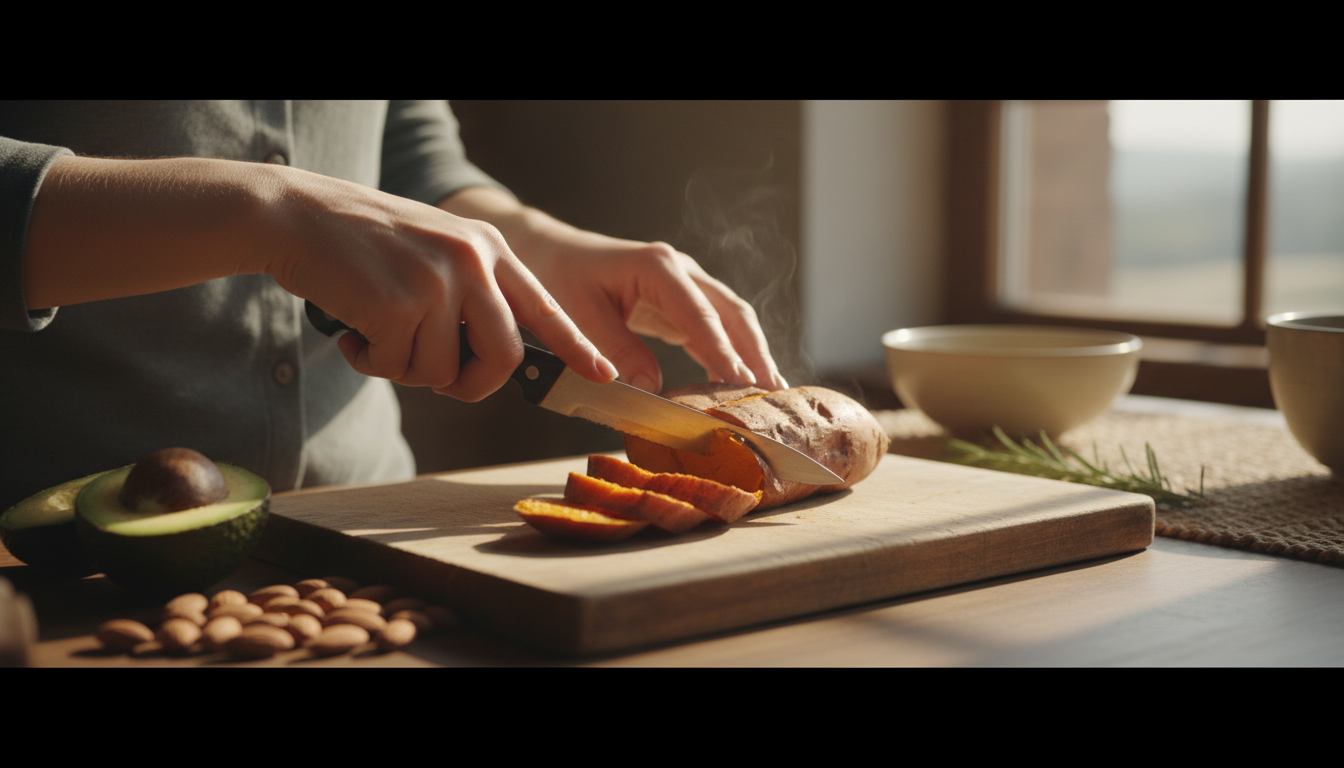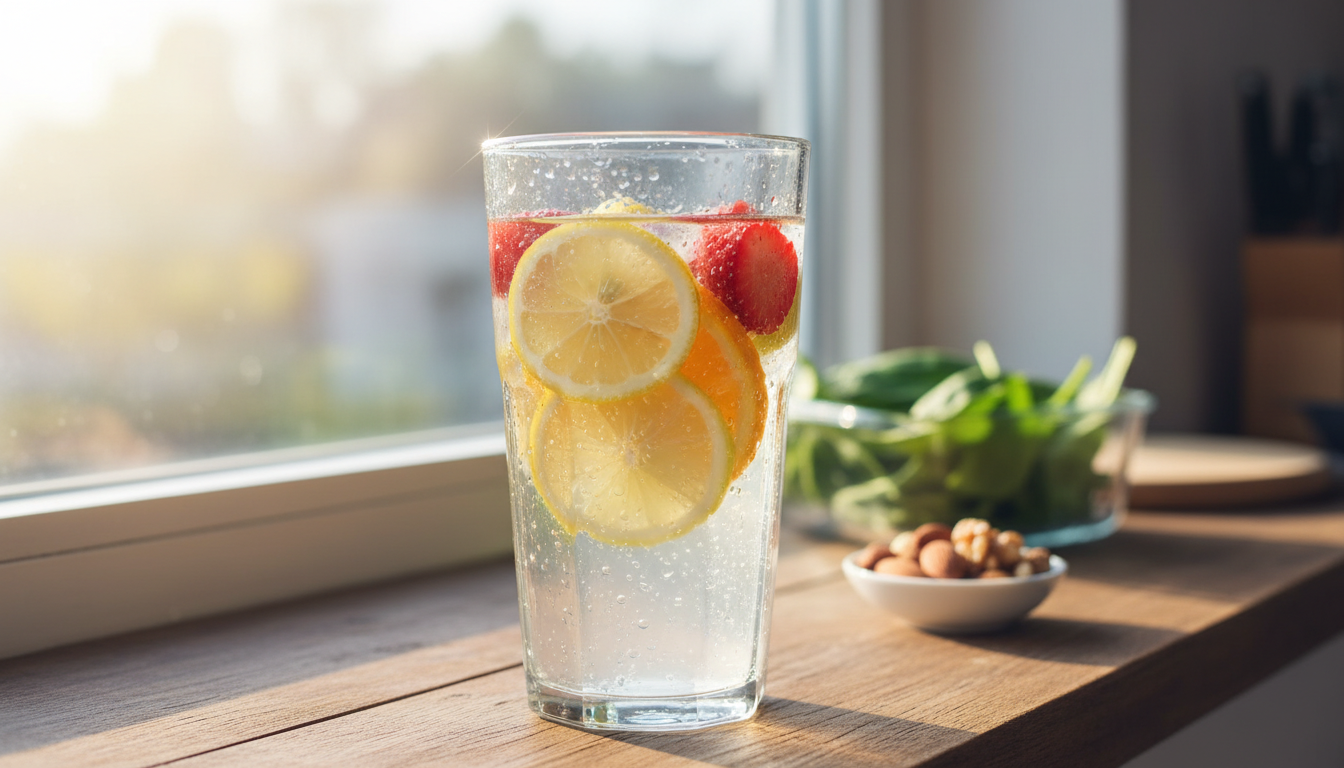15 Best Foods for Hair Growth: Nourish Your Strands from Within

Ever Wonder Why Your Hair Feels Thinner Lately?
Your hair is made of what you eat—literally. Those silky, strong strands you're dreaming of start in your kitchen, not just with fancy shampoos. Many women notice their hair losing its bounce when life gets hectic and meals turn into quick grabs. But here's the good news: focusing on whole foods can support hair growth from the inside out, without relying on supplements. In this post, we'll dive into 15 best foods for hair growth that are easy to find, especially in Europe, and share practical ways to add them to your day. You'll get real tips, a sample meal plan, and why hydration seals the deal. Let's nourish your hair the natural way and see those healthier locks shine.
Why Diet Matters for Hair (You Are What You Eat)
Think about it: your hair is mostly protein, built from the nutrients you feed your body. When your diet lacks key building blocks, hair can become brittle, slow-growing, or even thin out. Many women in their 30s and 40s tell me they've seen improvements just by tweaking what they eat—no miracles, but steady support for healthier follicles.

Hair grows about half an inch a month, but that cycle relies on proteins, vitamins, and minerals to keep things humming. Skip the processed stuff, and focus on whole foods; they're more bioavailable, meaning your body uses them efficiently. For instance, iron helps carry oxygen to your scalp, while biotin strengthens the keratin structure. It's not about eating perfectly every day, but consistently choosing nutrient-dense options. In our experience, women who prioritize these foods often report less breakage and a fuller feel after a few months. Pair this with good habits, as outlined in our guide on healthy hair habits, and you're giving your hair a real boost. Ready to see how? Let's break it down by nutrient groups.
Protein Powerhouses
Protein is the foundation of hair—it's what keratin, the main hair protein, is made from. Without enough, your strands can weaken and shed more. Aim for 46-56 grams daily, spread across meals, to support growth.
-
Eggs: These are a complete protein, packed with all essential amino acids plus biotin. Many women love starting their day with two boiled eggs; it's simple and keeps you full. In our experience, consistent egg eaters notice stronger roots over time.
-
Salmon: Beyond protein, it's loaded with omega-3 fatty acids that reduce scalp inflammation and may promote thicker hair. Grill a 4-ounce fillet twice a week—pair it with veggies for a balanced plate.
-
Greek Yogurt: High in protein (about 20 grams per cup) and probiotics for gut health, which indirectly aids nutrient absorption. Top plain, low-fat yogurt with berries for breakfast; it's creamy and satisfying.
-
Lentils: A vegan star with 18 grams of protein per cup, plus iron. Cook them into soups or salads—easy for meat-free days. Women going plant-based often find lentils help maintain hair volume without feeling heavy.
These powerhouses aren't just fillers; they actively nourish follicles. Start small, like adding one to each meal, and watch how your hair responds.

Iron-Rich Foods
Iron deficiency is sneaky and common, especially for women due to periods or diets low in reds. It can lead to fatigue and thinning hair by starving follicles of oxygen. Getting 18 mg daily from food can help restore balance—focus on heme (animal) and non-heme (plant) sources.
-
Spinach: This leafy green offers non-heme iron (about 3 mg per cup cooked) and is gentle on the stomach. Sauté a handful with garlic for sides; many notice less hair fall after incorporating greens regularly.
-
Red Meat: Lean beef provides heme iron (2-3 mg per 3-ounce serving), absorbed easily. Enjoy in moderation, like once a week in stir-fries, to avoid overload while supporting growth.
-
Pumpkin Seeds: A snackable source with 2 mg iron per ounce, plus zinc. Sprinkle 1/4 cup on salads or yogurt—vegan-friendly and crunchy for that satisfying crunch.
Pair these with vitamin C foods (next up) to boost absorption up to 6 times. In practical terms, women who've upped their iron intake often share stories of hair feeling more resilient after 2-3 months. It's realistic progress, not overnight magic.
Biotin Sources
Biotin, or vitamin B7, helps produce keratin and may support hair thickness. While deficiencies are rare, low levels from crash diets can show in brittle strands. Aim for 30 mcg daily through foods—it's abundant and effective.
- Sweet Potatoes: One medium baked potato delivers over 8 mcg biotin, plus beta-carotene for scalp health. Roast them weekly; their natural sweetness makes them a comforting side.

-
Almonds: About 6 mcg per ounce, with healthy fats that moisturize from within. Grab a handful (1 ounce) as a mid-afternoon snack—women love how it curbs cravings while benefiting hair.
-
Avocado: Half an avocado gives 2-6 mcg biotin and vitamin E for shine. Mash it on toast or in salads; it's versatile and adds creaminess without guilt.
These aren't hype—they're everyday staples that many women incorporate easily. For more on essential nutrients like biotin, check out our post on the best vitamins for hair health. From our chats, those adding biotin-rich foods report smoother, less frizzy hair over time. Remember, consistency is key; mix them into meals for steady nourishment.
Vitamin C (for Iron Absorption)
Vitamin C isn't just for immunity—it supercharges iron absorption, crucial for hair oxygen delivery. Without it, even iron-rich meals fall short. Target 75-90 mg daily; it's easy with fresh produce.
-
Bell Peppers: One red pepper packs 150 mg, way more than oranges. Slice into salads or stir-fries—colorful and crisp for lunch boosts.
-
Citrus Fruits: An orange or grapefruit gives 70 mg; juicy and refreshing. Squeeze into water or eat whole for a morning pick-me-up.
-
Strawberries: A cup delivers 85 mg, plus antioxidants. Fresh or in smoothies, they're a sweet treat that many women enjoy seasonally.
Combine these with iron sources, like spinach salad with strawberries, for max effect. In experience, women pairing them see better energy and hair vitality. It's a simple swap that amplifies your diet's impact on growth.
📊 Not Sure What's Causing Your Hair Concerns?
Take our 2-minute Hair Analysis Quiz to get personalized product recommendations based on your unique hair type, scalp condition, and lifestyle.
Start Your Free Hair Analysis →
Zinc and Selenium
Zinc repairs hair tissue and supports oil glands, while selenium protects follicles from damage. Both prevent shedding; aim for 8 mg zinc and 55 mcg selenium daily.
-
Oysters: A top zinc source (74 mg per 3 ounces), but if seafood isn't your thing, try leaner options. Savor occasionally for a nutrient punch.
-
Brazil Nuts: One nut hits your selenium needs (68-96 mcg), with zinc too. Limit to 1-2 daily to avoid excess; they're rich and satisfying as a snack.
These minerals work quietly but powerfully. Women low in zinc often notice more breakage; adding nuts or seafood helps restore balance. Keep portions moderate for overall wellness.
Foods to Limit
While focusing on the good stuff, watch what drags your hair down. Processed foods can deplete nutrients, leading to weaker growth.
-
Excessive Sugar: Spikes inflammation and crashes energy, potentially worsening hair loss. Swap sodas for water; many feel clearer-minded and see less shedding after cutting back.
-
Alcohol: In moderation (1 drink/day), it's fine, but excess dehydrates and interferes with absorption. Opt for herbal teas instead—practical for social nights.
It's about balance, not deprivation. In our observations, women who limit these report steadier hair health alongside positive foods. Listen to your body and adjust as needed.
Sample Daily Meal Plan for Hair Health
Here's a realistic day of eating incorporating our 15 best foods for hair growth—about 1,800 calories, adjustable for you. It's European-friendly with fresh, accessible ingredients.
Breakfast: Greek yogurt parfait with strawberries, almonds, and a drizzle of honey (protein, biotin, vitamin C).
Mid-Morning Snack: Handful of pumpkin seeds and an orange (iron, vitamin C).
Lunch: Spinach salad with grilled salmon, bell peppers, avocado, and lentils (protein, iron, biotin, omega-3s).
Afternoon Snack: Boiled egg and a small sweet potato (protein, biotin).
Dinner: Lean red meat stir-fry with spinach, citrus segments, and quinoa (iron, vitamin C). Side of Brazil nuts for selenium.
Dessert/Treat: Fresh strawberries if craving sweet.
This plan mixes flavors without overwhelming prep—batch-cook lentils or chop veggies ahead. Many women find it sustainable, leading to noticeable hair improvements. Tweak for preferences, and remember, nutrition supports growth, but pairing with topical care like Medyko Grow & Glow Serum can accelerate results. For a comprehensive approach, explore our ultimate hair care routine for healthy hair growth.

Hydration Importance (Water Intake)
Water is the unsung hero for hair—dehydration makes strands dry and brittle, slowing growth. Your body is 60% water, and hair follicles need it to transport nutrients.
Aim for 8-10 glasses (2-2.5 liters) daily, more if active. Infuse with citrus for vitamin C bonus. Many women underestimate this; starting a hydration habit often brings softer, shinier hair within weeks.
Signs you're low: dull hair or scalp itchiness. Track intake with a bottle—practical and eye-opening. Combine with our foods list for full nourishment; it's the glue holding everything together.
Frequently Asked Questions
What are the best foods for hair growth if I'm vegetarian?
Focus on lentils, spinach, pumpkin seeds, sweet potatoes, almonds, avocado, bell peppers, strawberries, and Brazil nuts. These provide protein, iron, biotin, vitamin C, zinc, and selenium without meat. A sample meal: lentil soup with spinach and peppers. Consistency helps many vegetarians see stronger hair in 2-3 months.
How long until I see results from eating these foods?
Hair grows slowly, so expect 2-6 months for noticeable changes like less shedding or thicker feel. It varies by individual—track progress with photos. Pair with balanced habits for best outcomes; many women report gradual improvements.
Can these foods reverse hair loss?
They support healthier growth and may reduce thinning from nutrient gaps, but won't reverse genetic or medical causes. Consult a doctor for underlying issues. In experience, nutrient-rich diets often strengthen existing hair effectively.
How much protein do I need for hair health?
About 46 grams daily for women, from sources like eggs, yogurt, or lentils. Spread it out—e.g., 15g breakfast, 20g lunch. Too little can weaken strands; many find this amount sustainable and beneficial.
Is iron deficiency common for hair thinning?
Yes, especially in women; it limits oxygen to follicles. Foods like spinach and red meat help, boosted by vitamin C. Get levels checked if concerned—restoring iron often leads to fuller hair over time.
Do nuts like almonds and Brazil nuts really help hair?
Absolutely—they offer biotin, zinc, and selenium for follicle support. Limit to 1 ounce daily to avoid calories. Women snacking on them regularly notice less breakage; they're easy additions.
What's a quick way to add these foods daily?
Start with smoothies: blend Greek yogurt, berries, spinach, and avocado. Or salads with seeds and peppers. Batch-prep for busy weeks—practical steps that fit real life and support growth.
Should I avoid dairy for hair growth?
Not necessarily; Greek yogurt provides protein and probiotics. If lactose-intolerant, swap for plant-based like almond yogurt. Dairy helps many, but listen to your body for the best fit.
How does hydration affect hair from these foods?
Water helps absorb nutrients from foods, keeping scalp hydrated. Aim for 2 liters daily; dehydration dulls hair. Many see shinier strands when combining hydration with diet tweaks.
Can sugar really harm hair growth?
Excess sugar promotes inflammation, potentially worsening thinning. Limit to natural sources like fruit. Cutting back often leads to clearer skin and stronger hair—worth the swap.
Are omega-3s from salmon essential?
They reduce scalp inflammation, supporting growth. If not eating fish, try flaxseeds. Twice-weekly salmon helps many achieve healthier, less dry hair.
What's the role of vitamin C in this diet?
It enhances iron absorption from foods like spinach, vital for oxygen delivery. Eat bell peppers or citrus with meals—simple pairing that amplifies benefits for thicker hair.
Key Takeaways
- Prioritize whole foods like eggs, salmon, and spinach for protein and iron to build stronger hair from within.
- Pair iron-rich foods with vitamin C sources, such as strawberries or bell peppers, to boost absorption.
- Incorporate biotin from sweet potatoes and almonds daily for keratin support and shine.
- Limit sugar and alcohol to reduce inflammation that can hinder growth.
- Follow a sample meal plan to make these foods routine—start small for lasting results.
- Stay hydrated with 8-10 glasses of water to help nutrients reach your follicles.
- Combine diet with topical care like Grow & Glow Serum for accelerated hair health.

